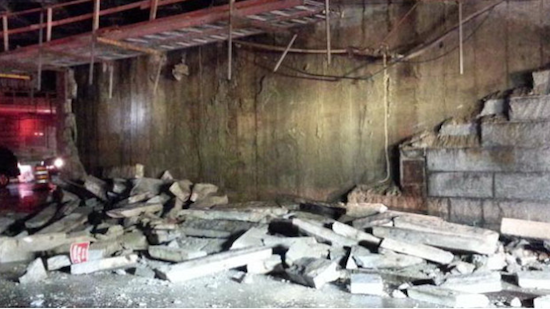OPINION: Message to NYC, ‘Read My Lips: I.N.F.R.A.S.T.R.U.C.T.U.R.E’

Rubble under the Brooklyn Bridge underpass. Photo by FDNY
The collapse of part of the façade of the Brooklyn Bridge’s walkway during last Wednesday’s heavy lightning storm, reported in the Brooklyn Daily Eagle by Mary Frost, shows how important bridge maintenance can be.
As Frost reported, the collapse injured five people. It could have injured many more, but water coming down from the façade minutes beforehand sent people below scurrying for shelter. Luckily, those who were hurt had minor injuries.
I have no doubt that the contractors will correct any problems with the bridge’s façade. But this brings to mind an almost-forgotten episode of recent history: The bridge scandal of the 1980s, which involved the other two Brooklyn-to-Manhattan bridges.